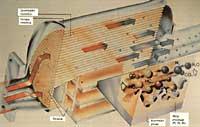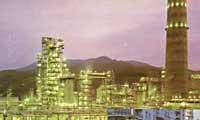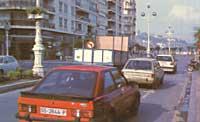New lead-free gasoline
Elhuyar Fundazioa

To answer the above question it is necessary to know the characteristics of each car. If the car has catalytic boat (see ELHUYAR. Science and technology. Number 27 pp. 12-15), there is no problem to choose gasoline. Take the so-called “Eurosuper” (lead-free). This is a catalytic boat car, designed specifically to burn that gasoline. In some gas stations there are also “super lead-free” and you can take catalytic boats. You will have to pay more, but you can get better benefits for it.
In the case of a classic car without a catalytic boat, if prudent, conventional leaded gasoline will take it “super”. In some areas you may be tempted to buy unleaded gasoline because it is cheaper. The manufacture of unleaded gasoline is more expensive in itself, but in some states the government applies less taxes to combat pollution and the selling price is cheaper than lead.
Can you start burning lead-free gasoline safely? The answer is almost always positive when the car is new, especially if it is 98 octane unleaded gasoline. Unleaded gasoline called “Eurosuper” can also be purchased many times. However, it is safest to go to car dealers. They are best suited to decide what type of gasoline suits each model of your brand and each series of each model.
But why have unleaded gasoline blended the problem that was once so simple? No doubt because of pollution. Conventional gasoline contains organic lead compounds that contaminate the atmosphere. In addition, they destroy the catalytic boats of the new cars.
The catalytic canister function is to eliminate carbon monoxide, unburned hydrocarbons and nitrogen oxides. In all cars with a cylinder capacity exceeding two liters since July last year, the catalytic boat is mandatory and from July 1992 it will be mandatory for all cars. Since the catalytic canister does not support lead gasoline, lead free gasoline is gradually being imposed. Now, therefore, we are in the transition phase from one system to another and we have all kinds of gasoline: old and new.

Good gasoline, of course, must be suitable for the engine to be fed, but it must also be reverse, since to some extent the engine can be manufactured according to the gasoline to be burned.
Good gasoline for cars should have specific characteristics: Density less than 0.765, sufficient (but not excessive) volatility to start in cold, complete evaporation at 205°C, absence of excessive sulfur and good number of octane.
The number of octane is why lead is present in conventional gasoline. Conventional “normal” and “super” gasoline therefore have lead and do not have “Eurosuper” or “super” lead free” (we have forgotten the goal). The octane number is to indicate the explosion capacity of the gasoline and air mixture entering the engine cylinder. The mixture of air and gasoline is compressed in the cylinder.
The mixture must be kept unexploded until a given moment. This time is usually shortly before maximum compression and if not respected, engine performance decreases and there is risk of deterioration. When the turning speed is low, the engine emits a clear noise. When the turning speed is high, this special noise is not heard, but it is as dangerous as the ear.
To know the suitability of a certain type of gasoline, technicians test on a standard engine. To qualify gasoline is compared to a mixture of two pure hydrocarbons. The hydrocarbons of this mixture are heptane and octane. To say that a gasoline has an octane number of 90 means that 90% behaves as a mixture of octane and 10% heptane.

Currently the octane number of gasoline is measured in two regimes. In low regime the research number (RON) is obtained and in high regime the engine number (MON). Currently, therefore, each gasoline has two octane numbers. Conventional “normal” gasoline are engine number 80 and research number 91. The conventional “super” ones are the engine number 87 and the research number 98. Normally at the gas station a single number of each gasoline is predicted, the highest research number. The other is about 10 points less.
The poorer the engine and the higher the compression ratio, the better performance you get. This requires gasoline with a high number of octane. In refineries, meanwhile, getting gasoline with a low octane number is cheaper than getting a high one. Therefore, once the low octane number gasoline is extracted at low price in the refinery and added lead (or adding organic lead compounds, better said) is earned from 5 to 10 points without major expenses. Therefore, until the last period in all refineries 0.64 g/l has been added to both normal and super gasoline (maximum allowed). At present the addition of lead to gasoline is being progressively banned and they must work differently in refineries to achieve the same result, even if costs are higher.
A liter of unleaded gasoline requires more crude oil than lead. Therefore, to burn unleaded gasoline would have to produce more oil. To prevent further oil production, the managers have established a new standard: Unleaded gasoline in Europe will have a lower octane number than conventional lead superr.
How far can this number be lowered? As mentioned above, cars have better performance with high octane numbers. With low octane numbers, therefore, refinery savings can be lost by spending more on the road. For all this, unleaded gasoline “Eurosuper” has its research number 95 and its engine 85. This gasoline therefore contains octane numbers with normal lead and superr. Most cars accept the Eurosuper, but not all. There is, therefore, a problem and to avoid it, engines are being manufactured (especially large displacement) for the motorist to run on unleaded gasoline Eurosuper 95 since 1985, despite the engine performance.
There are many classic old cars that do not accept the Eurosuper. And what do they have to do? Always burn gasoline with lead?

To solve the problem in the refinery is made a “super lead-free” with octane number 98 and engine number 88. Its features are the same as the lead superr, so any classic car (which works with lead superr) can burn.
But there are exceptions. The technicians have been able to verify that lead not only serves to keep the mixture of gasoline and air unexploded. It also serves to lubricate the valve seat. In most cases this lubrication is not necessary due to the hardness of the seat steel, but in some models it is usually not hard. These cars, however, can occasionally burn unleaded gasoline, but not always.
So far four types of gasoline have been described:
- Normal lead: octane number 91
- Super Lead: Octane Number 98
- “Eurosuperra” lead free: octane number 95
- Super lead-free: octane number 98

Each of these four types of gasoline contains their own mixing ratios between different hydrocarbons and special additives. Additives are in most cases detergents that prevent the generation of waste. It must also be said that some additives affect more than they benefit certain car models.
Additives favor cars with catalytic canisters and electronic injection, since for all reactions in the catalytic canister to be carried out, the absence of oxygen in the exhaust gases is essential and help to do so.





